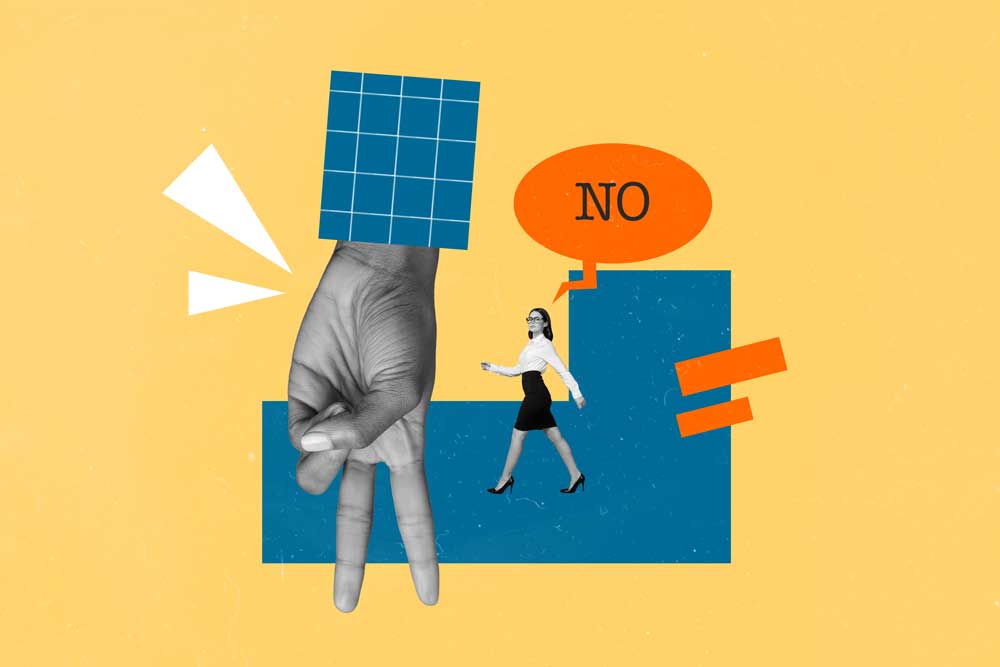Rejection is an inevitable part of life. Whether it’s declining a social invitation, turning down a collaboration at work, or pulling back from a personal relationship, it can be emotionally challenging for both the giver and receiver. But rejection doesn’t have to be cruel or cold. In fact, when done with empathy and clarity, it can strengthen respect, preserve dignity, and even leave the door open for future collaboration or connection.
Why Does Rejection Hurt?
According to Eisenberger, Lieberman, & Williams, from a neurological perspective, rejection activates the same areas of the brain associated with physical pain. That’s why rejection can feel so intense, because our brains are wired for social belonging. This is rooted in Baumeister and Leary’s ‘Need to Belong’ theory, which suggests that humans are fundamentally driven to form and maintain interpersonal relationships. When we reject someone, we threaten this sense of belonging, even if unintentionally.
Challenges Of Rejecting Someone
For the person doing the rejecting, the challenge often lies in avoiding guilt or being perceived as unkind. This is linked to cognitive dissonance or the psychological discomfort experienced when our actions contradict our self-perception of being kind and empathetic. But avoidance or vague messaging only makes things worse. Psychologist Dr Brené Brown advocates for ‘clear is kind, unclear is unkind’, suggesting that honest, respectful communication is always more compassionate in the long run.
How To Reject Someone Nicely
Focus on four psychological and communication principles:
1. Assertiveness: This is not to be confused with aggression. Assertiveness is the ability to express one’s thoughts, feelings, and needs clearly and respectfully, without undermining others or yourself.
2. Emotional Intelligence: According to Daniel Goleman’s framework, emotional intelligence involves self-awareness, self-regulation, empathy, motivation, and social skills. When rejecting someone, using empathy helps acknowledge their feelings while maintaining your boundaries.
3. Boundary Setting: Dr Henry Cloud and Dr John Townsend define boundaries as ‘a personal property line that marks those things for which we are responsible.’ Rejection is often simply the act of reaffirming your boundaries. In sort, you are making it clear what you are willing or able to do. Boundaries are not walls. They are filters that protect your energy and time while allowing healthy relationships to flourish.
4. Nonviolent Communication (NVC): Developed by psychologist Marshall Rosenberg, NVC focuses on expressing needs without blame. The formula is Observation, followed by Feeling, followed by Need and finally Request/Decision.

Rejection In Personal Friendships
It’s important to acknowledge that they’ve invited you or taken the initiative to involve you in their life in some way. But it is equally important to be honest, without guilt-tripping the other person. Also, leave room for future connection if the rejection is restricted to an isolated incident. On the other hand, growing apart from a friend is more difficult. How do you express that a friendship isn’t working for you anymore? Show self-awareness and validate the other person’s good qualities, but set a boundary without assigning blame. Do not ghost someone. Psychologists suggest that ghosting can cause confusion and emotional distress. A gradual, respectful distancing, if possible, is healthier. You can reduce interaction frequency, limit engagement in group settings, or move the dynamic to a more casual acquaintance level.
Rejection In Professional Relationships
Saying no to colleagues or acquaintances can be tricky, especially in close-knit work environments. It’s important to be honest without appearing dismissive. This preserves integrity while avoiding false endorsement. Declining additional work or collaboration opportunities should be done tactfully as well, communicating aspects such as your own limitations, appreciation for the offer, and encouragement for what they have planned. If someone reaches out for mentorship or guidance and you can't take it on, offer alternatives after declining graciously.
Psychologists and communication coaches distinguish between the ‘soft no’ and the ‘hard no’. The former is used when you're open to future engagement but not now. The latter can be used when you are closing the door permanently. Both are valid, but what matters is clarity and tone.
Coping With Reactions
Even when done kindly, rejection may hurt the other person. They may withdraw, get defensive, guilt-trip you or try to change your mind. Stay calm and reiterate your boundaries. Stick by what feels right for you. Avoid over-explaining, since it can come off as defensiveness or leave loopholes. Many people feel ‘rejection guilt’ after setting a boundary, especially if they're highly empathetic or people-pleasers. Remember, you are not responsible for someone else’s emotions and are allowed to prioritise your peace. Saying no doesn’t make you a bad person.
Whether it’s a friendship that’s fading or a professional request that doesn’t align, your delivery matters just as much as your decision. Saying no with integrity can actually build more trust than saying yes out of guilt.